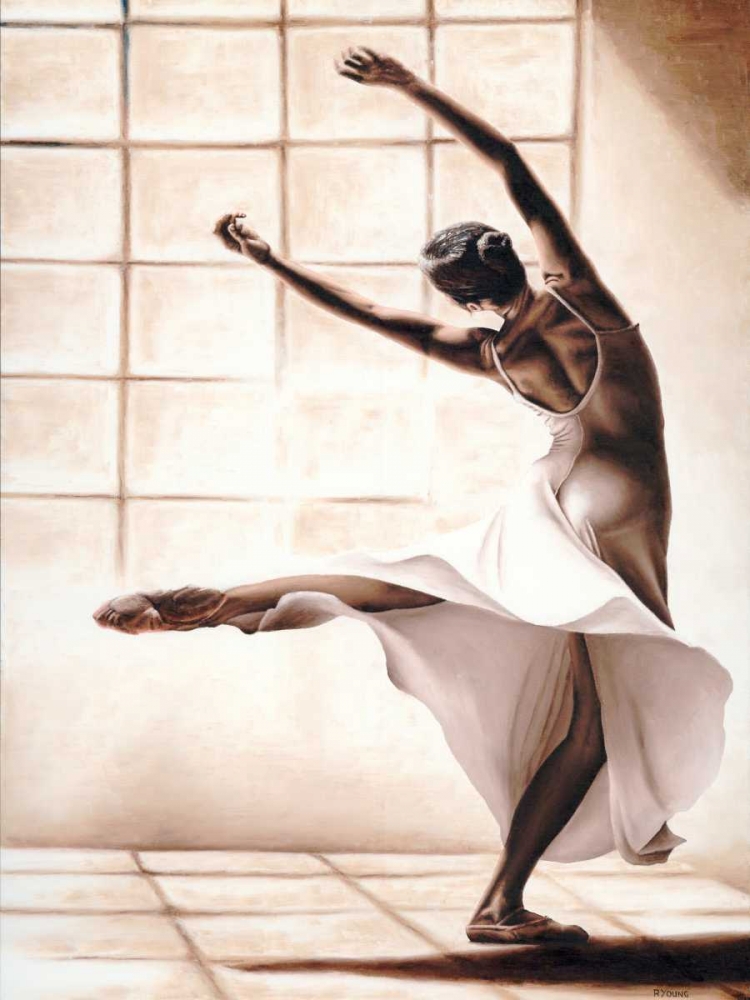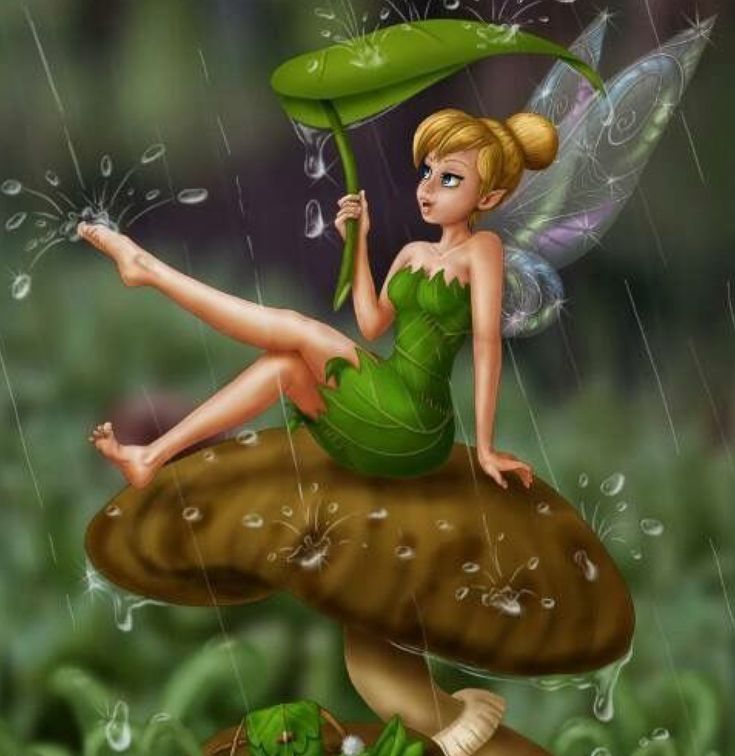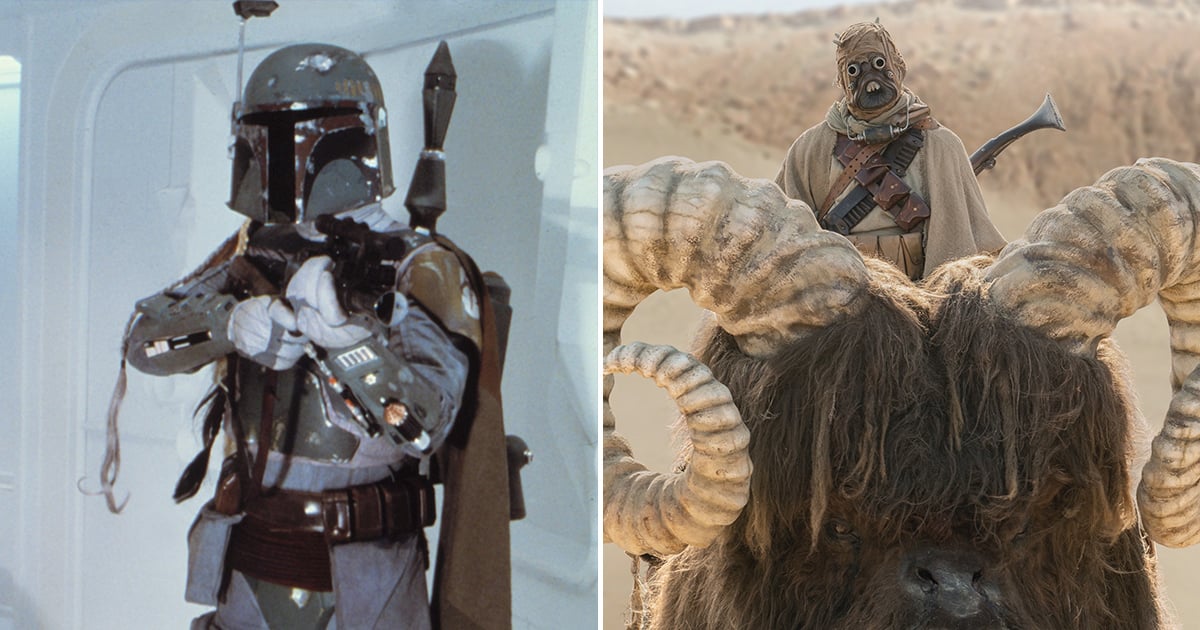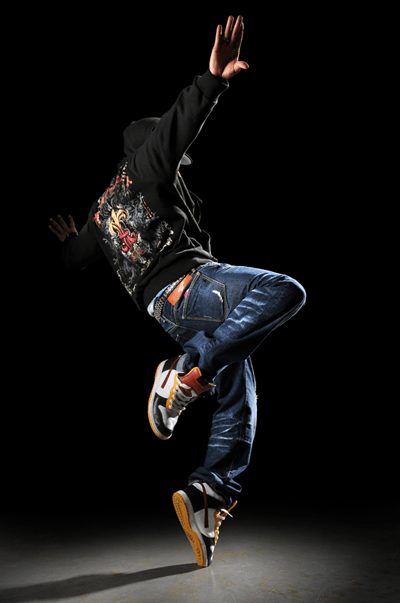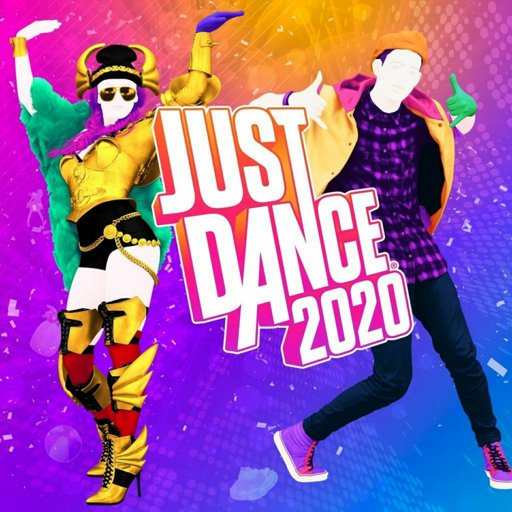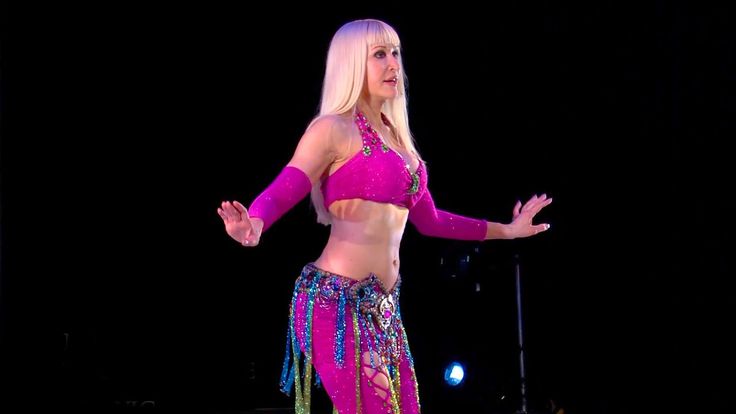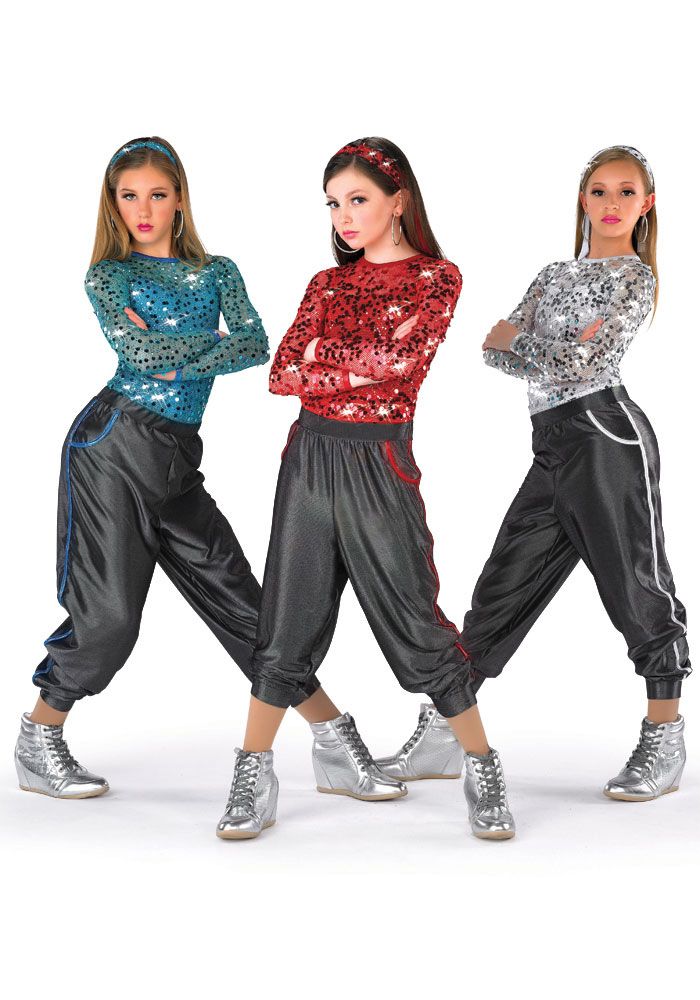How to dance with emotion
Emotions and the body - Part 1: Dance is emotion in motion - StageMinded
Feelings are a big part of performing as a dancer.
Think of the most memorable performances you’ve seen, what made them memorable? Isn’t is the way they moved you?
Think of your favourite dancers to watch, what makes them so stunning? Usually it’s the way they share something of their own soul through their dancing.
Feelings are what make dancers artists not athletes and yet we often treat feelings as an add-on in our approach.
Only once the steps are learnt and mastered, the spacing is right and everything else is technically perfect, do we start talking about feelings. At this point, we say, “Now it’s time to let go and really dance”, we transpose a layer of expression over the rehearsed movements and expect genuine smiles and enthusiasm to suddenly appear.
But what if we’re missing the fact that feelings are integral to the entire process of dancing from beginning to end?
If we can give the expression of feelings some space in the dance studio on a regular basis, we may actually produces dancers who are more authentic, intuitive, expressive, grounded, creative and moving to audiences.
Who doesn’t want that?
So, why are feelings so integral to how we dance?
Emovere – dance is essentially emotion in motion
The word emotion is derived from the latin word: “emovere” meaning to move, move out or move through.
When I first learnt this, I was floored: Emotion is the essence of movement.
Yes, dance, at its essence, is about expressing the deep, guttural emotionality that gets right to the very core of us. That’s what makes our movements moving.
In dance, our purpose is to express emotions, communicating physically, allowing those feelings to move through the body, out of the body, and in doing so, to move others.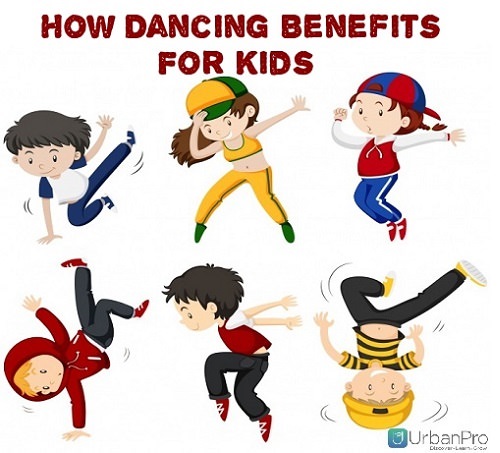
How powerful is that?
And yet, the way we typically train dancers is so detached from this. We separate technique from expression, we focus almost exclusively on the physical elements of strength, flexibility, shape, line & form and then get frustrated when our graduating students don’t know how to stand out at auditions, inspire choreographers, be creative and expressive and intense and moving.
Maybe it’s because we are not teaching them how to dance in an emotionally connected way.
Maybe it’s because we forget that emotions are actually embodied in our physical body and are a major part of how we move.
Emotions are embodied
Lisa Howell, dance physiotherapist from the Ballet Blog posted a great article last week about posture and emotions.
Emotions are not just an idea in your head, they are physically embodied. So, the way you feel affects the way you hold your body. For example, if you’re anxious you’ll probably get tense, if you’re confident you’ll stand tall and at ease, if you’re depressed you’ll slump.
Because emotions are embodied, they have implications on things that in dance are normally considered on purely physical terms, things like posture, line, coordination and injury.
Emotions might also provide a key for developing some of the more elusive elements that great dancers possess, but which can be so hard to pin down and teach: things like portraying beauty & ease, freedom of movement, confidence, risk-taking, creativity, intensity.
We often think these things are inherent, a dancer is either born with a natural way about them or they’re not. While it’s true that some dancers are naturally more intuitive and tend toward emotional authenticity, it’s certainly a skill that can be learned and developed.
By teaching dancers to understand, own and reveal the interaction between their emotions and their bodies in their dancing, teachers can enable dancers to develop a passion and purpose to their movements that can make even mediocre dancers genuinely moving.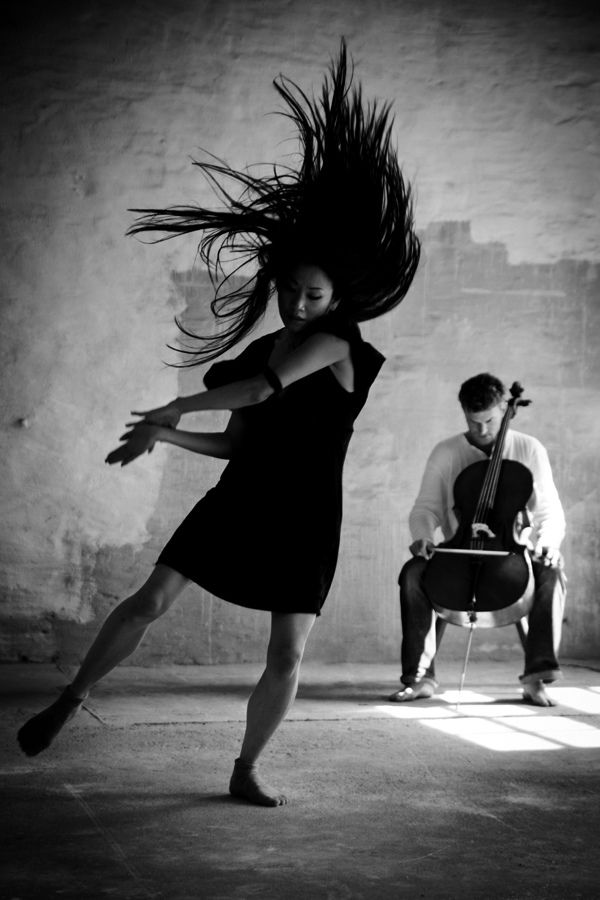
So how can a teacher start to draw out the emotions in the motions of their dancers?
Here are some ideas:
1) Start each class with an emotional check in.
Have your dancers close their eyes and consider:
- how they are feeling right now
- where and how they sense that feeling in their bodies
- how that feeling can move through/out of their body in today’s class
Whatever mood a dancer is in, whether happy, sad, frustrated, jealous, bored, afraid… these moods can be channeled into creativity through their body and movements
2) Encourage dancers to “let go and really dance” in every class, not only in the final stages before performances and exams
3) Get dancers to “try on” different feeling words in a combination, step or pose you are working on to see how that affects their movement quality and confidence. Get dancers to find the word that fits how they feel when they dance at their best.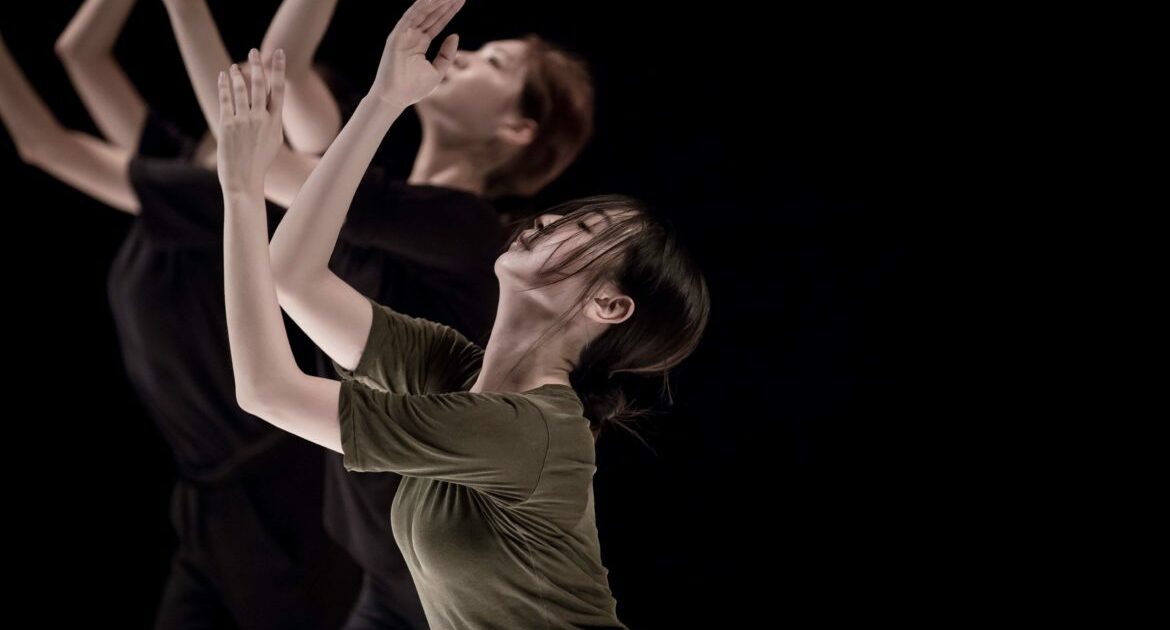
4) Consider the role of emotions in physical issues: When assessing technical weaknesses, injuries and physical tension, in addition to looking at bio-mechanical factors, also consider if there may be any emotional reasons why dancers hold their body in this way.
5) Make the dance studio a safe environment (free of judging and ridicule) where dancers can practice being vulnerable, open, integrated and passionate.
That’s all for today’s post, in Part 2 will be exploring the factors that keep us emotionally “stuck” in our dancing and how to become more authentic in your expression.
Make sure you don’t miss out on Part 2 by joining our mailing list here!
photo credit: conservatoire de danse (license)
How to Pull Emotion and Passion Out of Your Dancers
How to Pull Emotion and Passion Out of Your Dancers
Teaching technique to dancers is, for the most part, straightforward. Regardless of the style—”standing leg in plié,” “transfer your weight” or “find a low contracting lunge”—the cues become second nature for teachers and students. But articulating emotion and passion can be a struggle for teachers and even uncomfortable for some dancers to grasp and execute.
Regardless of the style—”standing leg in plié,” “transfer your weight” or “find a low contracting lunge”—the cues become second nature for teachers and students. But articulating emotion and passion can be a struggle for teachers and even uncomfortable for some dancers to grasp and execute.
While some kids naturally connect emotion to their movement, (i.e. the inspiring clip below), not every group of young dancers will have the zest and mature enthusiasm to move the audience or competition judges to stand up and cheer. So how do you teach a dancer to emote?
@danceteachermagazine on Instagram: “We’ll have what they’re having. These amazing dancers are giving us life today! 👏👏👏 Repost @_tsoares
Video shot at @lezginka_school_”
If you’re having trouble pulling the passion out of your students, here are a few ideas to help them find “the feeling” in their dancing.
Use Your Music
Choreographer Darrell Grand Moultrie strives to teach his students from a young age to understand musicality and dancing with passion.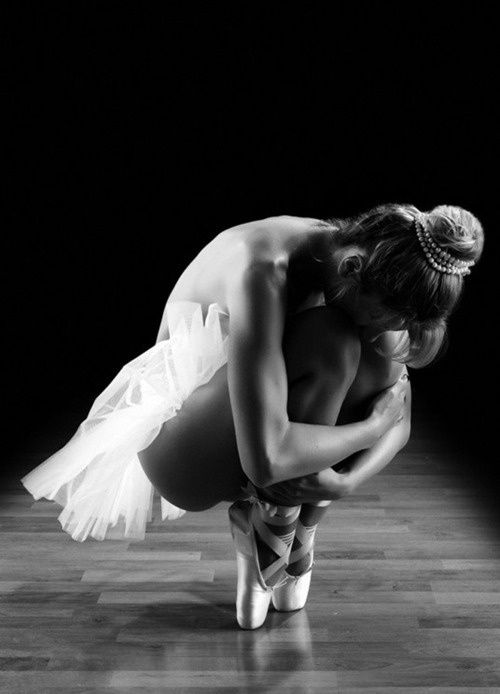 As a young dancer, he had a teacher who used soul and gospel music in class to pull emotion out of dancers, and he’s stuck with this method in his own teaching. “When you want young dancers to feel, using soulful vocals and music are like an instant shot and win,” says Moultrie.
As a young dancer, he had a teacher who used soul and gospel music in class to pull emotion out of dancers, and he’s stuck with this method in his own teaching. “When you want young dancers to feel, using soulful vocals and music are like an instant shot and win,” says Moultrie.
Here’s a video from a class at The Debbie Allen Dance Academy in Los Angeles of a group of young kids dancing with maturity far beyond their years.
Create the Emotion Behind the Story
“Everyone relates to a song or a concept differently,” says Tiffany Prout-Leitao, owner of Center Stage Dance Academy. “I have students come up with their own story, so it’s organic and not fake or forced. I have them listen to the song, close their eyes and not dance but see their movement and let the natural feeling come out.”
Kelby Brown, who’s taught for American Ballet Theatre and at conventions like The PULSE, takes a similar approach.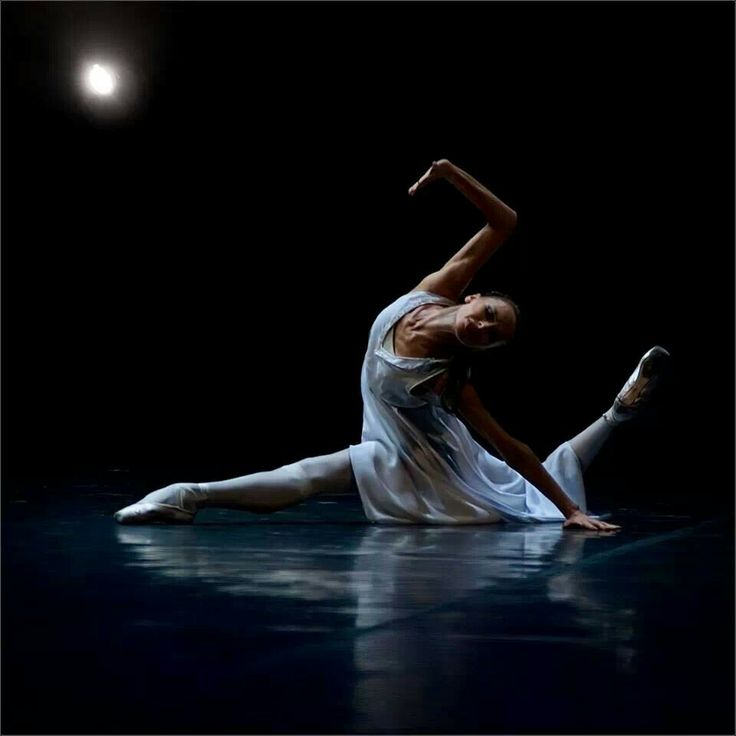
“To begin with, I always ask dancers to listen to their music without dancing. Just truly listen,” says Brown.
He asks students to create a guide for the choreography, what he calls an emotional outline, by choosing three adjectives to describe the music. This encourages dancers to consider their senses and how those details affect the movement—visualize the space, what it smells like, what their relationship is to the other dancers or themselves, whether it’s a solo and whether they’re moving through a material like mud or water.
“These are all tools that young dancers need to gather, so they can have confidence in their portrayal of whatever emotion they’re trying to get across to the audience,” says Brown.
“If you don’t feel something, then the audience won’t, either,” he adds. “It’s our job as dancers to create that experience.”
Artistry and emotional expression in dance - Ivanovo Ballroom Dance School
Artistry and emotional expression in dance
Starting to learn dance, people mainly focus on learning a certain set of movements and their subsequent development.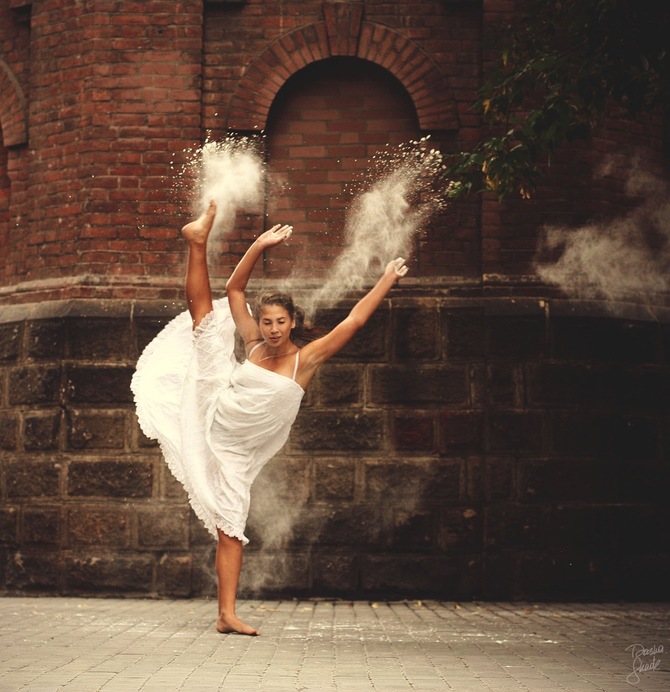
Indeed, in dancing technique is a very important point, but without a bright emotional coloring, one will never be able to convey the real character of the dance. Artistry in dance is as important as a well-trained body and this also needs to be learned.
Many things prevent dancers from fully revealing themselves in the dance, conveying certain emotions and, accordingly, enjoying the performance.
Some people can't switch off from everyday problems, others think only about the dance technique, and for some, external stimuli such as the attention of the public, unfamiliar surroundings are a serious emotional block.
Because you need to find a way to distract yourself where there is nothing but you, your music and your emotional reaction to this music. Choose a melody that touches your soul, evokes passion, love, sadness, or vice versa - improves your mood.
Speaking of pair dancing, it is especially important to note the emotional interaction with a partner . In ballroom dancing, there is always a relationship between a man and a woman, and how artistic the partners will be with each other depends on their compliance with the nature of the dance.
In ballroom dancing, there is always a relationship between a man and a woman, and how artistic the partners will be with each other depends on their compliance with the nature of the dance.
A very important point here is eye contact . Partners do not just look at each other, but play with their eyes a kind of game that ignites emotions. One has only to look away or think about something, as this emotional outburst fades away, and the dance becomes aerobics, which does not give pleasure to either the dancers or the spectator.
Of course, it is possible that eye contact is lost in the dance variations, but in this case the "feeling of a partner" should not be lost. Feeling the partner with the whole body to emotionally convey these sensations is the main task of the dancers.
Dance and emotional expression in it is part of the game - and it's better to overact than to look stiff. An excess of emotions is not so common, but a lack is all the time. In the dance, the face and body, especially that of the partner , must radiate confidence and pleasure - and this is an extremely important moment on the way to dance success.
In the dance, the face and body, especially that of the partner , must radiate confidence and pleasure - and this is an extremely important moment on the way to dance success.
Just as in training we do not always dance at full speed, so with emotions - we do not throw them out in every dance. But at the stage when you have learned the composition and the technique of its performance suits you, you need to go through it in “full pace” with maximum emotional expression.
The female part is much more emotional in the dance than the male part.
And here we can advise the girls to be completely relaxed in their emotions, to express the nature of the dance without hesitation.
Some people, due to natural features, are cheerful, carefree, optimistic, joyful, and all this spills over in the dance.
Such excellent qualities will lead to success in bright dynamic dances - cha-cha-cha, jive, quickstep and samba, but more sensual dances will have to be worked on.
Your natural inclination to certain dances should not be an obstacle to the successful mastering of different styles and directions in dances. Here you just need to master the art of reincarnation, that is, to be an artist.
So, for some people, the artistry and emotional expression of their feelings in dance is quite natural. For others, it's a skill that needs to be learned through trial and error. And the secret here is to free your head from unnecessary thoughts and fears, liberate yourself in order to learn to feel music, dance, partner and yourself. It will probably be very hard at first, don't expect passion to rush out of you at the very first lesson.
Keep working on your technique and emotionality, try hard and your work will be rewarded. Celebrate even your smallest successes - each of them
How to stop worrying and start burning?
This is one of those posts that deals with frequently asked questions that have already been answered many times in PM and in real conversations. But the number of questions somehow does not dry out, so I decided to summarize my answers, experience, reasoning and create a separate article on this burning topic. I want to immediately focus on the fact that, perhaps, all this is focused specifically on swing dances, which, in terms of expression of feelings and emotional values, are very close to social dancing even in a competitive form - we value naturalness, sincerity, warmth, joy, and not the gloss and monotony of ideal dances. masks worn by dancers, such as ballroom dancing.
But the number of questions somehow does not dry out, so I decided to summarize my answers, experience, reasoning and create a separate article on this burning topic. I want to immediately focus on the fact that, perhaps, all this is focused specifically on swing dances, which, in terms of expression of feelings and emotional values, are very close to social dancing even in a competitive form - we value naturalness, sincerity, warmth, joy, and not the gloss and monotony of ideal dances. masks worn by dancers, such as ballroom dancing.
----------------------------------------
So, for some reason, it so happened that girls quite often turn to me (and several times boys, however, one asked not for himself, for his partner) with one and the same same question, formulated in different ways: how do you manage to have fun and have fun on stage? why do you look bright and happy during the performance, and I can't do it? how to learn to show on stage not only the technique, but also the emotions from the dance? In a word: how to stop worrying and start burning!?
I must say right away that it seems to me that I am not the person who can ideally answer this question: I did not study acting or performing arts, and for me "burning" is for the most part not some a separate type of activity that I practice and which I specially learned as they study in theater schools, but the natural result of those emotions, sensations, inner state that happens to me when I dance, when I perform.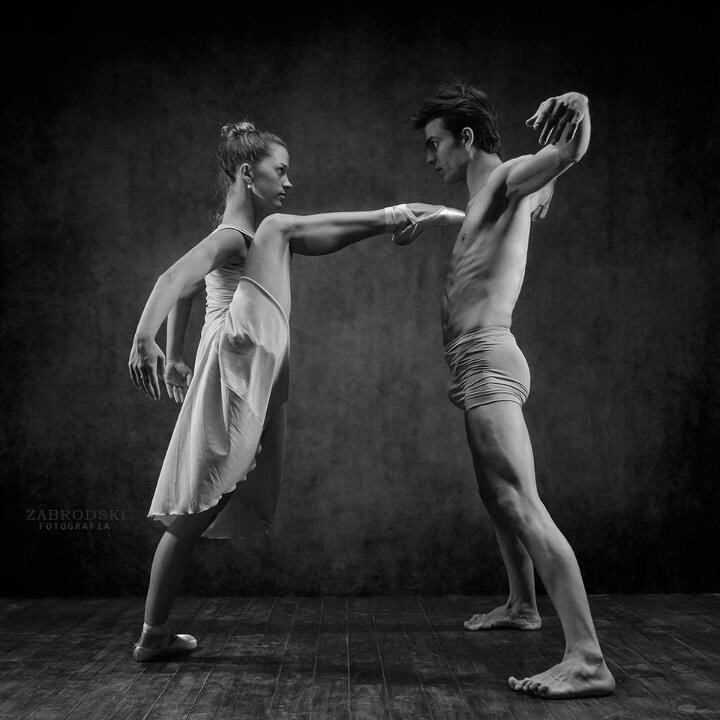 And therefore, the only thing I can talk about (however, what I think is the right way) is just about how not to try to train the "annealing" and the "correct" happy-emotional face, but try to find, feel inside yourself that joy and pleasure, which subsequently naturally correctly reflect on the face, facial expressions, plasticity and give the very thing that has always been present in the judging criteria, and in the new rules it is placed in a separate paragraph "Perfomance" and is described as "charisma, joy of dancing, easy execution, relax, smooth..."
And therefore, the only thing I can talk about (however, what I think is the right way) is just about how not to try to train the "annealing" and the "correct" happy-emotional face, but try to find, feel inside yourself that joy and pleasure, which subsequently naturally correctly reflect on the face, facial expressions, plasticity and give the very thing that has always been present in the judging criteria, and in the new rules it is placed in a separate paragraph "Perfomance" and is described as "charisma, joy of dancing, easy execution, relax, smooth..."
In general, in my opinion, does not make sense to deal with the consequences, you need to find and eliminate the cause of . If this is not done, then sooner or later the consequences will still manifest themselves in one form or another, or result in some kind of side effect, just like if the weed is not uprooted, it will grow again, and any drugs that relieve symptoms, and do not eliminate the causes of the disease, at best do not lead to deterioration and temporarily alleviate suffering, but do not lead to recovery.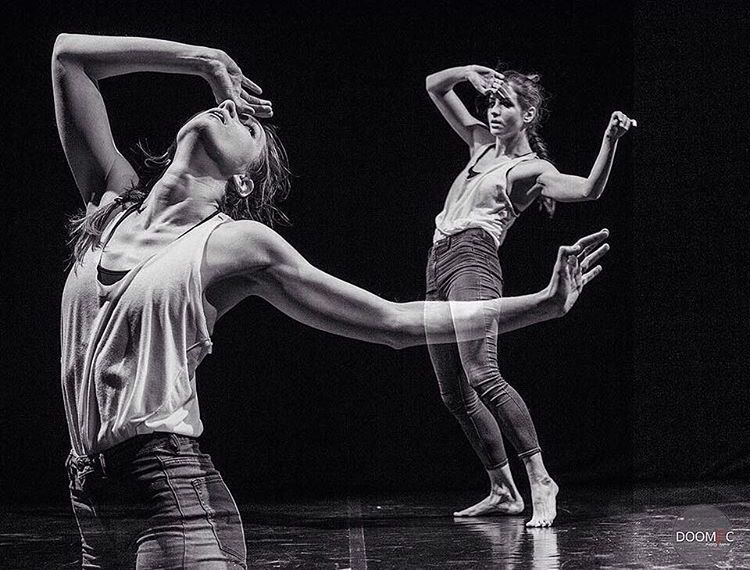 Therefore, the first thing I recommend doing is to figure out where the legs of your problem grow from, why you don’t rejoice, don’t smile, don’t enjoy the scene, and fight exactly with the source of the problem, and not train a fake smile in ten different ways.
Therefore, the first thing I recommend doing is to figure out where the legs of your problem grow from, why you don’t rejoice, don’t smile, don’t enjoy the scene, and fight exactly with the source of the problem, and not train a fake smile in ten different ways.
----------------------------------------
So, why do I look open, emotional, bright on stage, why do I let myself burn and have fun?
1. Because I love what I do. Because I enjoy it.
At first I wanted to write "because I love to dance", but then I realized that this would not be a complete answer. It is important to love "dance" in order to train productively, to spend a lot of time at parties, to withstand dance gatherings and camps with almost round-the-clock immersion, etc. Of course, I really love boogie-woogie, its plasticity, dynamics, energy, character, I understand why it is exactly like this, and not another, how it works, how it was formed and which way it went, how it corresponds to music, what is important and important in it. cool, and it's all close and interesting to me. And, of course, I like boogie-woogie music. I find in it things that are consonant with my personality and my character. I've always liked rock'n'roll, drive, breakaway, crazy antics - I miss that in other dances. If you came to boogie woogie, then you like it too - I do not believe that a person who can not stand Elvis, Jerry Lee Lewis, their crazy era, can come to dances where you have to listen to them for several hours in a row. And if you also love it all, then it should cause a smile, positive - just don't hold it back!
cool, and it's all close and interesting to me. And, of course, I like boogie-woogie music. I find in it things that are consonant with my personality and my character. I've always liked rock'n'roll, drive, breakaway, crazy antics - I miss that in other dances. If you came to boogie woogie, then you like it too - I do not believe that a person who can not stand Elvis, Jerry Lee Lewis, their crazy era, can come to dances where you have to listen to them for several hours in a row. And if you also love it all, then it should cause a smile, positive - just don't hold it back!
But, of course, in order to burn on stage, you need to love not only the dance and music itself, but also the performance itself as a fact of public attention. That is, experiences that are associated with the fact that many people are looking at you - and everything is different: judges are critical, your fans are enthusiastic, rivals are excited, ill-wishers are critical, etc.
It sounds scary, but in fact you can find a lot of useful and pleasant things in everything, learn to love it and enjoy it, and personally I can say that I love it all very much. Firstly, I (more precisely, our couple) have my own idea of what a dance is, what it should be, how it should look, how it should be built and performed, and we are trying to dance our own boogie-woogie, in in the form and in the form that we consider the best and which is important to us. Each of our performances is an attempt to convey our idea of dance to others, to share it and open its steepness to those who look at us, and this thought and this feeling also inspire and inspire. That is why successful moments evoke an absolutely sincere joyful reaction in me. The desire to show something, to share your vision and understanding of dance, your hearing of music - this is what makes you want to move mountains, and when it works out, it is positive, joy and happiness.
Firstly, I (more precisely, our couple) have my own idea of what a dance is, what it should be, how it should look, how it should be built and performed, and we are trying to dance our own boogie-woogie, in in the form and in the form that we consider the best and which is important to us. Each of our performances is an attempt to convey our idea of dance to others, to share it and open its steepness to those who look at us, and this thought and this feeling also inspire and inspire. That is why successful moments evoke an absolutely sincere joyful reaction in me. The desire to show something, to share your vision and understanding of dance, your hearing of music - this is what makes you want to move mountains, and when it works out, it is positive, joy and happiness.
And secondly, I like to show and prove to people that I can, that I'm cool, that I'm the best, I like it when my inner feeling is confirmed by both professionals (judges and dancers) and amateurs (spectators)! And when it works out, it gives me great joy, a boost of energy, when it doesn't work out - I perceive this as an experience that will be useful to me in order to succeed next time. Therefore, when I am given the opportunity to realize what I want, I always rejoice at it and strive to use it one hundred percent, and this joy obscures fear and anxiety, which, of course, also exist, but when they are only side effects of a pleasant business, they are easily overcome, are not dangerous, but on the contrary, they even contribute to the release of adrenaline and increase opportunities.
Therefore, when I am given the opportunity to realize what I want, I always rejoice at it and strive to use it one hundred percent, and this joy obscures fear and anxiety, which, of course, also exist, but when they are only side effects of a pleasant business, they are easily overcome, are not dangerous, but on the contrary, they even contribute to the release of adrenaline and increase opportunities.
Try to find your buzz in public speaking: after all, if you came to swing dancing, then you should like what is inherent in their nature, underlies and demonstrated in dozens of old dance videos, namely: to go to the center of the circle and show , how can you play the game "who is cooler", in which there are no losers, because everyone gets pleasure from the process, and the audience loves not only winners, but often not even winners at all (what are the performances of at least Rasmus and Tova , who were never winners, but got such a standing ovation that the four-time world champion Torbjorn never dreamed of).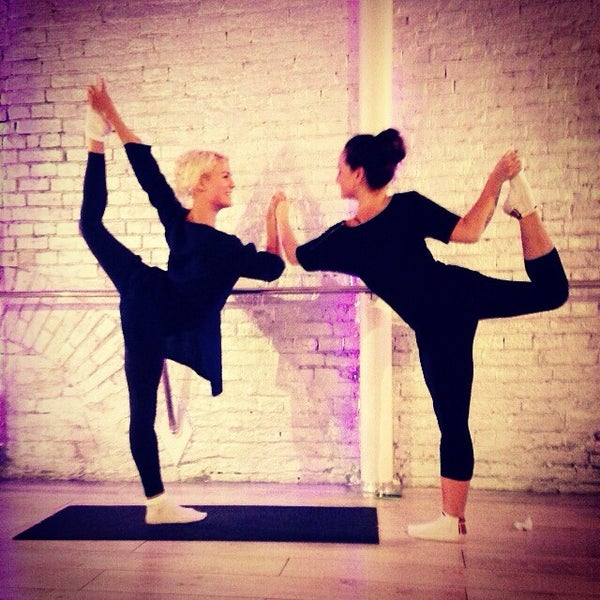 Try to understand that in fact it is how exciting, how pleasant it is, the reverse side of adrenaline is a thrill, and the audience loves you regardless of the result.
Try to understand that in fact it is how exciting, how pleasant it is, the reverse side of adrenaline is a thrill, and the audience loves you regardless of the result.
2. Because I like myself, because I am confident.
This is a very difficult point, and I'm afraid I can't compete with millions of trainings and tons of psychological and pseudo-psychological literature on how to gain self-confidence and start to like yourself. It is worth saying that, as it seems to me, our dances themselves greatly contribute to gaining self-confidence, because the environment of swing dances is very open, friendly, in an adequate sense body-positive. Even the top competitive partners are all very different both in physique and style, in the manner of dressing and behaving, and each is very good in her own way. Try to watch, for example, the salsa championships, where naked, polished chicks in self-tanning are twisting their spherical butts, and then compare with our top partners, among whom there are cute plump, and thin, and athletes, not to mention the character, manners and style. Understand that boogie woogie accepts everyone for who they are, to be the best you do not have to meet the Hollywood standard!
Understand that boogie woogie accepts everyone for who they are, to be the best you do not have to meet the Hollywood standard!
Try to look at yourself in the mirror more during training, look for good poses and moments during the dance in which you will say "wow, now I'm cool" or "I'm doing great." Over time, there will be more and more such things, and when your feeling is reinforced by applause from the audience, you can no longer doubt it. Do not be afraid to grimace and make some funny faces: in boogie-woogie music and dance there is a sea of humor, funny moments, wit - and you want to somehow react to all this, somehow express it, and your mimic abilities will be very useful here . Grieve and make yourself laugh, don't be afraid and don't be shy, please yourself with different faces! I like my "stupid" photos no less than with a smooth chic smile (welcome to our Instagram), and if you want to make sure that any even super-duper boogie-woogie star has such photos, and they don’t cause not negative emotions - you need to look at the photo section on the WRRC website, or even better - in our public "Boogie dancer chota says".
Also, try not to criticize yourself too harshly. I understand that this is also a very difficult moment for me, but personally it helped me a lot that it turns out, firstly, not everything that is noticeable to the person himself is noticeable to others. For example, one of my acquaintances has a crooked tooth that cannot be noticed at all, because it is located on the side and practically does not open even with a strong smile. Imagine my surprise when this person told me that he was embarrassed to smile precisely because of this tooth! Because of some crooked tooth that I didn't notice at all until he showed it to me! And there are a lot of such examples, think about whether your shortcomings are so terrible and whether they are real and noticeable. Secondly, one more of my discoveries: what one does not like, another may like very much. There are no universal things and what you consider your main disadvantage may well be your highlight.
I know very well that I'm not a stereotypical beauty, I don't have a perfect face and a non-standard figure. But this is not important at all, because there are no rules on how exactly I should look, there are no standards with which I should compare myself, and in any case, no matter how I look, there are and will be those people who I don't like me, as well as those who like me . Therefore, why break spears in vain, no matter how you look, you are still not a hundred dollars, so some will praise it, while others will scold it - look and behave the way you want, as you like - life will become easier and smile on the face will appear much more often!
But this is not important at all, because there are no rules on how exactly I should look, there are no standards with which I should compare myself, and in any case, no matter how I look, there are and will be those people who I don't like me, as well as those who like me . Therefore, why break spears in vain, no matter how you look, you are still not a hundred dollars, so some will praise it, while others will scold it - look and behave the way you want, as you like - life will become easier and smile on the face will appear much more often!
3. I am constantly in search of myself, my style, image.
I already said above that I love boogie-woogie because every dancer and every couple can choose how they want to look, move, what style, presentation, manners they will have. If you study the history of at least competitive boogie, it will become obvious how different and special all the partners (and couples in general) are, and how much this comes from the initial data of appearance and biometrics, and from the understanding of dance, and from personal character traits: circus performers and acrobats William and Maeva, pranksters and fools Rasmus and Tova, Hollywood beauties Torbjorn and Susanna, cuties and bunnies Jessica with Kakushka, vintage and true swing Isabella with Pontus, etc. Each couple (and each partner especially!) is different in their own way, and throughout their dance path they try on different manners and ways of behaving on stage. Try, experiment, look for what will be organic for you.
Each couple (and each partner especially!) is different in their own way, and throughout their dance path they try on different manners and ways of behaving on stage. Try, experiment, look for what will be organic for you.
If you find exactly the image that suits you and in which you will optimally open up and feel organic and natural, I will be comfortable on stage and easily express emotions.
If I came up with a new dress for myself, and it’s not like everyone else’s, I’ll sew it and try to dance in it, if I don’t like it, it’s okay, now I know that I don’t like it, if I like it, great, then I will continue to dig exactly in this direction. If I want to slow dance in trousers, I will try, if I want to wear shorts, I will wear shorts. If I don’t like the cute vintage hairstyles that are customary for boogie-woogie competitions, no one will force me to do this, because my inner self-awareness requires that I shave my sides and put on a mohawk. The same applies to behavior on stage, manners, style of movement. Try, change, choose, look for what suits you and what you are good at. And when it's good - you want to smile, burn, have fun. Let competitions be an occasion for you to express yourself, open up, show yourself in a way that you do not have the opportunity, for example, at your work in the office or at home. Buy yourself the dress you want, make the hairstyle you dreamed of - and have fun.
Try, change, choose, look for what suits you and what you are good at. And when it's good - you want to smile, burn, have fun. Let competitions be an occasion for you to express yourself, open up, show yourself in a way that you do not have the opportunity, for example, at your work in the office or at home. Buy yourself the dress you want, make the hairstyle you dreamed of - and have fun.
4. I'm not afraid to experiment = I'm not afraid of making mistakes.
In general, I can hardly understand people who are worried, for example, because of an unsuccessful haircut - it's all just for a couple of weeks, think about it, but I tried it! Well, or even because of some kind of mistake or failure that happens - well, anything can happen, you need to try to treat it easier, draw conclusions and move on. A negative experience is also an experience, and it is also a step towards the goal, you just need to draw the right conclusions and benefit.
Of course, no one likes to look stupid or bad, but on the other hand, we only have one life, and if we constantly kill ourselves because of every mistake, mistake, failure, then how much time and effort it takes! One performance is just one performance, nothing terrible happened, even if everything went badly, this dress does not suit you at all, and you went too far with blue lipstick.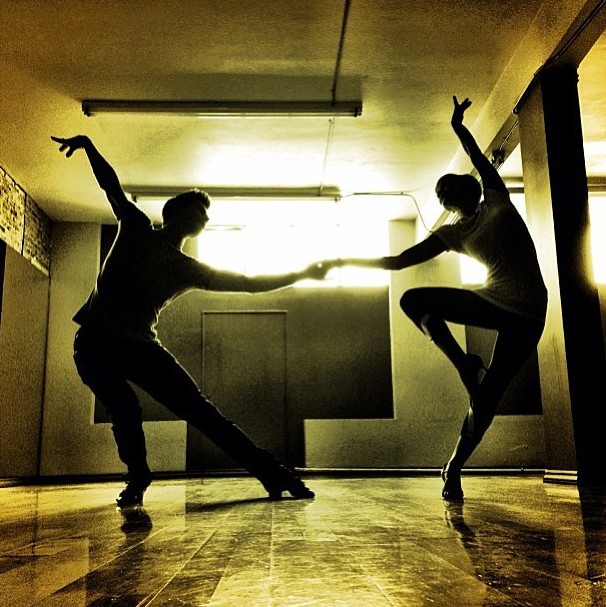 I have had many failures regarding any aspect of the dance - both costumes that disfigure me (which, in principle, is not so difficult, for example, if I have wide straight shoulders and the absence of feminine curves in the right places), and dance moments in which I was stupid and screwed up, but what can I say, once everything was so shitty that after the performance I locked myself in the women's toilet and cried there for 20 minutes until Kolya found me and pulled me out of there. That was a long time ago, and now I'm even more relaxed about such things, but even then I quickly realized what nonsense I was toiling over the past, if there was an opportunity to spend this time and energy preparing for the future.
I have had many failures regarding any aspect of the dance - both costumes that disfigure me (which, in principle, is not so difficult, for example, if I have wide straight shoulders and the absence of feminine curves in the right places), and dance moments in which I was stupid and screwed up, but what can I say, once everything was so shitty that after the performance I locked myself in the women's toilet and cried there for 20 minutes until Kolya found me and pulled me out of there. That was a long time ago, and now I'm even more relaxed about such things, but even then I quickly realized what nonsense I was toiling over the past, if there was an opportunity to spend this time and energy preparing for the future.
So keep it simple, try what you want, take risks, and most importantly - take mistakes as experience and learn from them, not suffer.
5. I "train" to show emotions in life.
I put "training" in quotation marks because I don't really train, I just manifest them. Many people love me for it, and many do not, but I consider the only correct way of life to openly express my feelings, and, most importantly, to express them in general. Indifference and monotony seem terrible to me, a couple of declarations of love and expressions of delight, well, or good sincere quarrels and subsequent reconciliations, I always prefer diplomatically polite neutral tricks. It goes without saying that everything has its place and time, that there must be a situation and an opportunity for this, and that I am unlikely to run after a person who does not ask me to tell him what I think about him - these are already extremes, no need exaggerate. But still, if I like something in a person, I try to tell him this, not to keep it to myself, just like vice versa - if I don’t like something, I’m unlikely to smile and nod politely, most likely I I will get angry or upset if I am offended, I will burst into tears, if they scare me - I will scream, if I am surprised - my face, not being afraid to become ugly, will express the most natural unrestrained surprise.
Many people love me for it, and many do not, but I consider the only correct way of life to openly express my feelings, and, most importantly, to express them in general. Indifference and monotony seem terrible to me, a couple of declarations of love and expressions of delight, well, or good sincere quarrels and subsequent reconciliations, I always prefer diplomatically polite neutral tricks. It goes without saying that everything has its place and time, that there must be a situation and an opportunity for this, and that I am unlikely to run after a person who does not ask me to tell him what I think about him - these are already extremes, no need exaggerate. But still, if I like something in a person, I try to tell him this, not to keep it to myself, just like vice versa - if I don’t like something, I’m unlikely to smile and nod politely, most likely I I will get angry or upset if I am offended, I will burst into tears, if they scare me - I will scream, if I am surprised - my face, not being afraid to become ugly, will express the most natural unrestrained surprise. I am not shy to laugh and often cry, I tell people that they are beautiful and that I love them, that they are doing something cool when I see it, just like I am indignant and unhappy when they do something unpleasant and bad.
I am not shy to laugh and often cry, I tell people that they are beautiful and that I love them, that they are doing something cool when I see it, just like I am indignant and unhappy when they do something unpleasant and bad.
Of course, I suspect that an ideal diplomat or an adherent of Dale Carnegie will not come out of me, because I don’t know how and don’t want to please everyone and be friends with everyone, but this path allows those people who like me to be near me, such what I am, and not the nonsense that I spun to them so that it would be pleasant to communicate with them, and saves me from people with whom my understanding of the world and life does not converge and for communication with whom I would have to pretend to be someone else.
And of course, it makes it easier to express emotions on stage. Since I often show different emotions, my body, facial expressions, face - everything is ready to show them. Try to show more emotions in life, especially good ones, so that your facial expressions and your body get used to expressing joy, so that it turns out to be half-turned: today the weather is good - well, cool, skip along the street, your partner has a new shirt - say that you noticed and she is super, for once a new figure has turned out - jump for happiness and hug). For some it’s easier, for others it’s more difficult, it all depends on habits, upbringing, character, but I’m sure that if in life the manifestation of emotions through words, facial expressions, gestures becomes daily and natural, you won’t have to rejoice on stage painfully learn, the face and body will then know how best to express it.
For some it’s easier, for others it’s more difficult, it all depends on habits, upbringing, character, but I’m sure that if in life the manifestation of emotions through words, facial expressions, gestures becomes daily and natural, you won’t have to rejoice on stage painfully learn, the face and body will then know how best to express it.
6. I try to dance better and better.
Yes, yes, this is also very important. Look at any group of beginners. Most often, they have tense faces, expressing a mixture of suffering and perseverance, and this is due precisely to the fact that they do not have a good command of their body, basic, the basic dance principles have not yet become automatic, convenient and natural. It is impossible to relax and enjoy the process if you are constantly thinking about which leg to transfer your weight to or how to hold your hand - the sooner this all becomes automatic, convenient, the sooner the RAM will be freed up, which can be used for other purposes: listen to music, look at a partner and much more.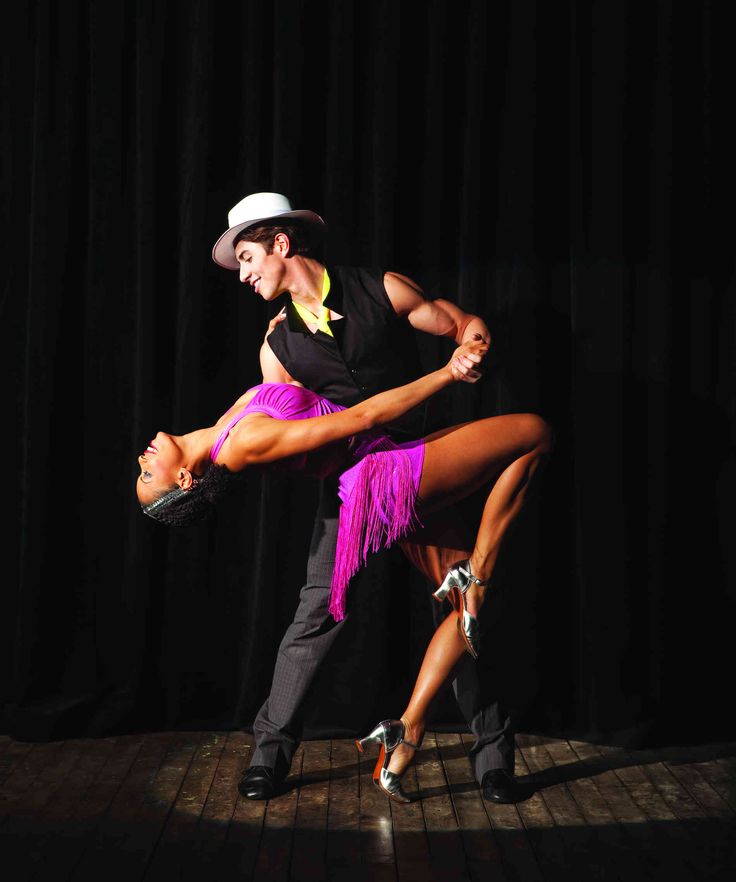 How easy and comfortable you dance depends on how pleasant it is for you - so develop your dance skills, bring the basic principles and technique to automatism so that nothing distracts you!
How easy and comfortable you dance depends on how pleasant it is for you - so develop your dance skills, bring the basic principles and technique to automatism so that nothing distracts you!
Also try to be in good physical shape. Dancing for a minute and a half at a fast pace is not the easiest task for breathing and the circulatory system. If you get tired quickly, it can become impossible to enjoy anything. I'm not saying that you need to become a marathon athlete, just make sure that you don't have a hell of an effort to dance a competitive program and that you don't survive on the court, but feel comfortable. Running, fitness, aerobics - any sport will help you.
7. I don't panic, I don't get too upset and I try to "keep face" if something goes wrong.
Of course, if something unpleasant happens in the dance, this is a problem, because if you are used to always expressing your emotions sincerely, this can spoil the impression of your dance.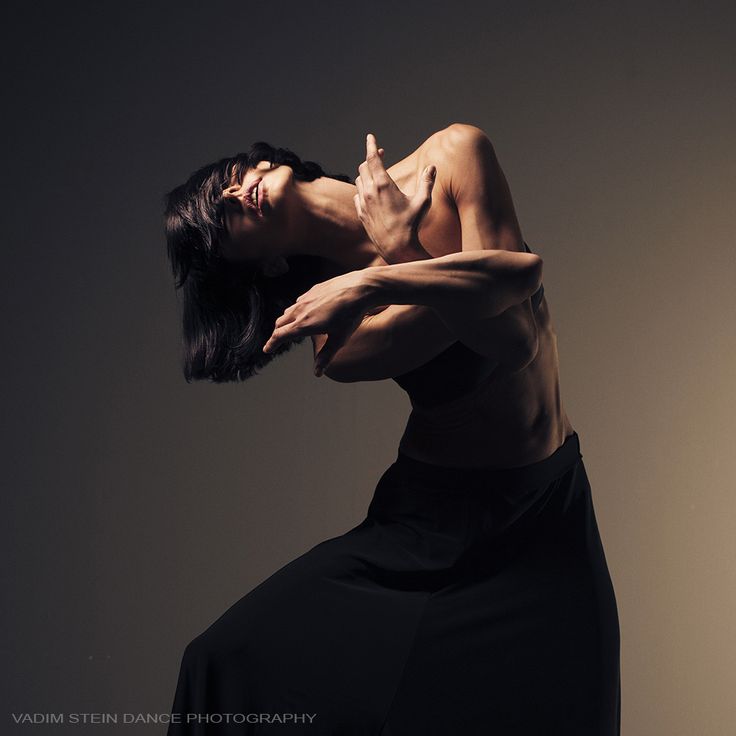 Therefore, all the previous paragraphs rather talk about how to learn to show your feelings, accustom your body and face to them, and how to create the best atmosphere so that all this works and works on the court. Therefore, of course, the work of the partner also consists in smoothing out such moments and at all costs maintaining a positive look and attitude. Firstly, for this there must be a habit, a switch to the "I'm performing, now everything is super!" mode. Practice this in self-study. Run - it means you should forget that something hurts, stop doubting whether you turned off the iron, try to think only about your partner and music, and enjoy everything that happens. With the right attitude and the habit of enjoying the dance, adrenaline and excitement should only help the overall result, I am often so inspired by the performance that I cannot be upset not only by some inaccurate hit on the break, but also by some kind of abrasion or bruise, which I got a lot when performing tricks)).
Therefore, all the previous paragraphs rather talk about how to learn to show your feelings, accustom your body and face to them, and how to create the best atmosphere so that all this works and works on the court. Therefore, of course, the work of the partner also consists in smoothing out such moments and at all costs maintaining a positive look and attitude. Firstly, for this there must be a habit, a switch to the "I'm performing, now everything is super!" mode. Practice this in self-study. Run - it means you should forget that something hurts, stop doubting whether you turned off the iron, try to think only about your partner and music, and enjoy everything that happens. With the right attitude and the habit of enjoying the dance, adrenaline and excitement should only help the overall result, I am often so inspired by the performance that I cannot be upset not only by some inaccurate hit on the break, but also by some kind of abrasion or bruise, which I got a lot when performing tricks)).
Whatever happens to you at a performance, you have only one attempt, and it is happening right now - is it worth spending it on frustration and negativity, why not treat everything that happens with joy and pleasure? At such moments, I often remember Suzanne at this performance, where Torbjorn very robustly entered her head with his foot at 0:30, but she behaved so confidently and calmly that many did not even notice this mistake when watching the video, look, maybe it will help you too!
8 . Well, the last. All this is very correct, but it just so happens that emotions in their natural form are not always suitable for the stage , even though boogie-woogie takes on a very wide range of images and characters. Therefore, perhaps, after it starts to turn out to manifest them, they will have to be "ennobled" a little.
What do I mean? There are unacceptable things for the scene. For example, look at the floor. Or look at the upper diagonal, as if you were answering a difficult ticket in an exam.